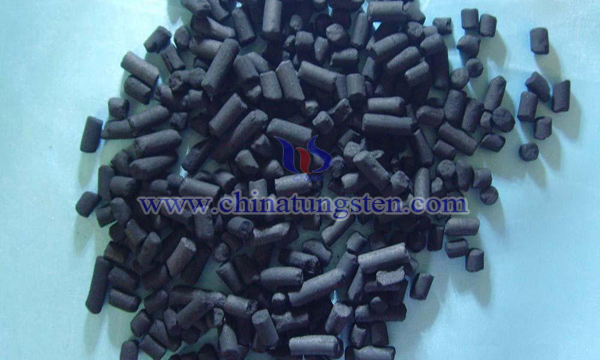How to Prepare Tungsten Carbide--Carbon Composites
- Details
- Category: Tungsten Information
- Published on Saturday, 20 April 2019 17:03
Tungsten carbide has a catalytic activity similar to platinum. It has stable physical and chemical properties and low cost. With people's attention to clean energy, the application of tungsten carbide in catalytic fields, such as direct methanol fuel cell, catalytic hydrogen evolution, supercapacitor and catalytic desulfurization, has attracted extensive attention of scientists. For example, tungsten carbide as a catalyst can partly replace or to some extent save precious metals such as platinum and palladium, and its application prospect is broad.

The preparation method of tungsten carbide-carbon composites can be realized by following technical schemes: using biomimetic synthesis method, using wood as mimetic model, surfactant as "soft" model, tungsten source and carbon source as precursor, introducing by vacuum impregnation, using solvent evaporation-induced self-assembly process and thermal field multi-coupling to prepare hierarchical pore junctions with micropore, mesopore and macropore. Tungsten carbide/carbon composites of texture, the specific operation steps of which include:
(1)Take 20% (wt.) low-order phenolic resin 5.0g, add ethanol 20g and 10g water, stir for 20 minutes at 40 ℃, then add 2.0gF127, continue stirring until completely dissolved; then add 33.3wt% AMT solution 1.0g, fully disperse to obtain uniform transparent solution, continue stirring for 1 hour, then get the precursor solution;
(2)Transfer the precursor solution to 10 g wood flour, impregnate it in vacuum for 30 minutes, then volatilize the mixed solvent at 40 ℃ until it is completely dried, and then solidify it in an oven at 105 ℃ for 24 hours to obtain the prepolymer.
(3)The prepolymer is ground into fragments and placed in a tubular reactor. The mixture of nitrogen and hydrogen with a gas flow rate of 60 mL/min and a volume ratio of 3:1 is gradually heated to 900 ℃ for 3 hours at constant temperature. The rate of temperature rise of the program is 5 ℃/min. Then the tungsten carbide-carbon composite is obtained by natural cooling and grinding.
Tungsten carbide-carbon composite materials are widely used in various electrochemical catalysis, sensors and organic synthesis, especially as catalysts or carriers for direct methanol fuel cells, in order to save platinum catalysts and promote the industrialization of fuel cells and other related green energy sources.
- Tungsten Carbide Manufacturer & Supplier, Chinatungsten Online: tungsten-carbide.com.cn
- Tungsten News & Prices of China Tungsten Industry Association: www.ctia.com.cn
- Molybdenum News & Price: news.molybdenum.com.cn
- Tel.: 86 592 5129696; Fax: 86 592 5129797; Email: sales@chinatungsten.com



 sales@chinatungsten.com
sales@chinatungsten.com